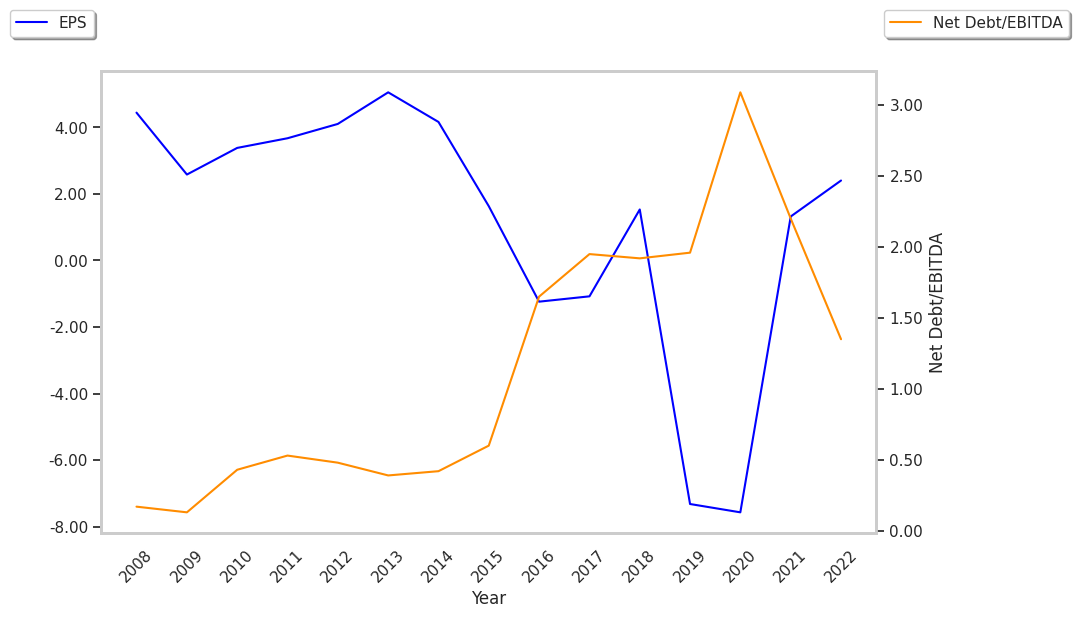Standing out among the Street's worst performers today is Schlumberger, a oil & gas equipment & services company whose shares slumped -3.7% to a price of $52.0, 23.42% below its average analyst target price of $67.9.
The average analyst rating for the stock is buy. SLB lagged the S&P 500 index by -3.0% so far today and by -23.5% over the last year, returning -0.1%.
Schlumberger Limited engages in the provision of technology for the energy industry worldwide. The company is classified within the energy sector. The stock prices of energy companies are highly correlated with geopolitics: economic crisis, war, commodity prices, and politics all have an effect on the industry. For this reason, energy companies tend to have high volatility -— meaning large and frequent price swings. As global energy supplies shift towards renewables, we may see a reduced correlation between energy prices and geopolitical events.
Schlumberger's trailing 12 month P/E ratio is 17.9, based on its trailing EPS of $2.91. The company has a forward P/E ratio of 12.6 according to its forward EPS of $4.14 -- which is an estimate of what its earnings will look like in the next quarter. As of the first quarter of 2023, the average Price to Earnings (P/E) ratio for US energy companies is 8.53, and the S&P 500 has an average of 15.97. The P/E ratio consists in the stock's share price divided by its earnings per share (EPS), representing how much investors are willing to spend for each dollar of the company's earnings. Earnings are the company's revenues minus the cost of goods sold, overhead, and taxes.
A significant limitation with the price to earnings analysis is that it doesn’t account for investors’ growth expectations in the company. For example, a company with a low P/E ratio may not actually be a good value if it has little growth potential. Conversely, companies with high P/E ratios may be fairly valued in terms of growth expectations.
When we divide Schlumberger's P/E ratio by its projected 5 year earnings growth rate, we see that it has a Price to Earnings Growth (PEG) ratio of 0.78. This tells us that the company is largely undervalued in terms of growth expectations -- but remember, these growth expectations could turn out to be wrong!
To deepen our understanding of the company's finances, we should study the effect of its depreciation and capital expenditures on the company's bottom line. We can see the effect of these additional factors in Schlumberger's free cash flow, which was $4.7 Billion as of its most recent annual report. Over the last 4 years, the company's average free cash flow has been $3.23 Billion and they've been growing at an average rate of 5.3%. With such strong cash flows, the company can not only re-invest in its business, it can afford to offer regular returns to its equity investors in the form of dividends. Over the last 12 months, investors in SLB have received an annualized dividend yield of 1.9% on their capital.
Another valuation metric for analyzing a stock is its Price to Book (P/B) Ratio, which consists in its share price divided by its book value per share. The book value refers to the present liquidation value of the company, as if it sold all of its assets and paid off all debts). Schlumberger's P/B ratio is 3.68 -- in other words, the market value of the company exceeds its book value by a factor of more than 3, so the company's assets may be overvalued compared to the average P/B ratio of the Energy sector, which stands at 1.78 as of the first quarter of 2023.
Schlumberger is likely undervalued at today's prices because it has a higher P/E ratio than its sector average, a higher than Average P/B Ratio, and generally positive cash flows with an upwards trend. The stock has mixed growth prospects because of its strong operating margins with a positive growth rate, and an average PEG ratio. We hope this preliminary analysis will encourage you to do your own research into SLB's fundamental values -- especially their trends over the last few years, which provide the clearest picture of the company's valuation.



